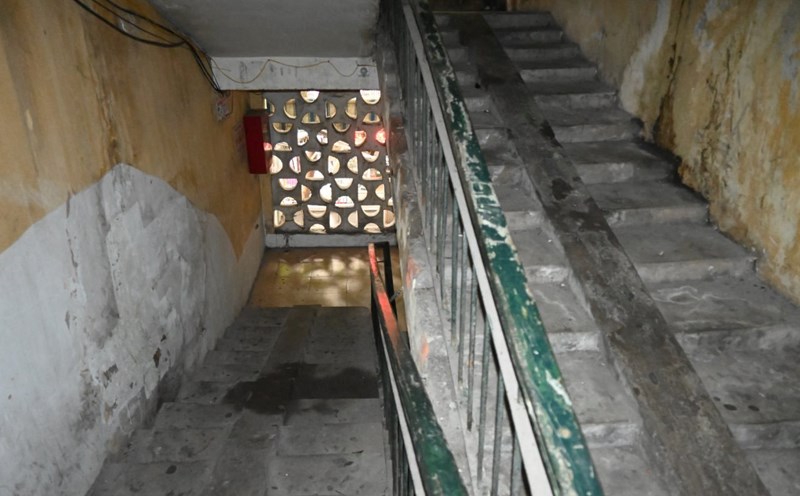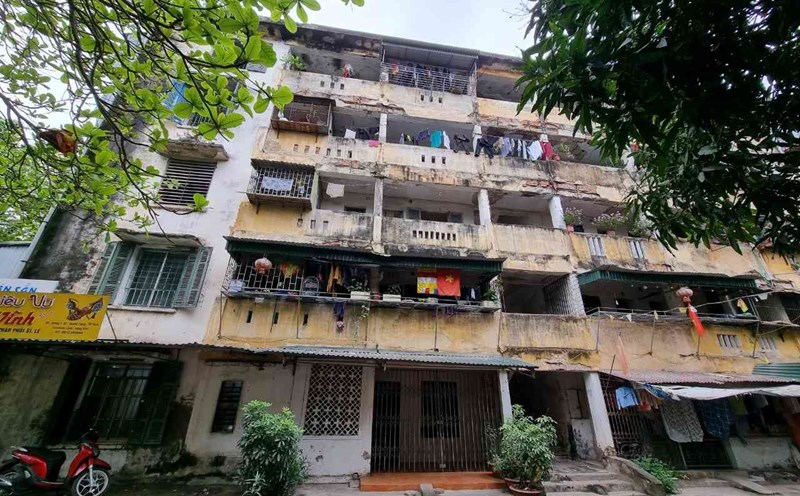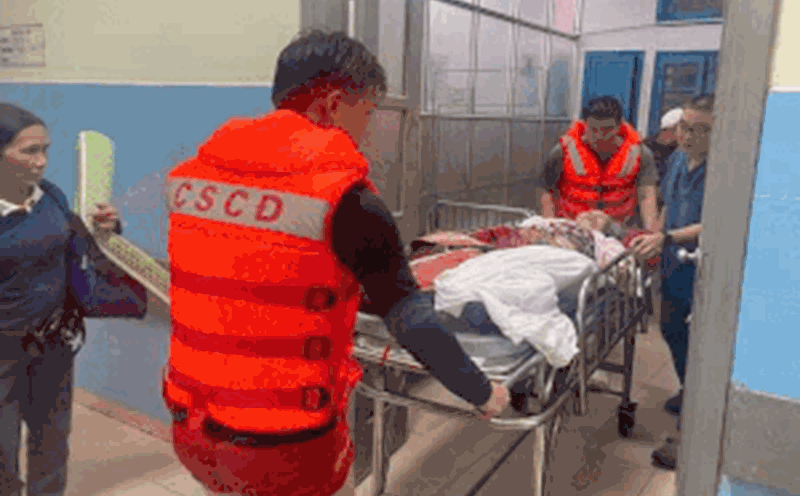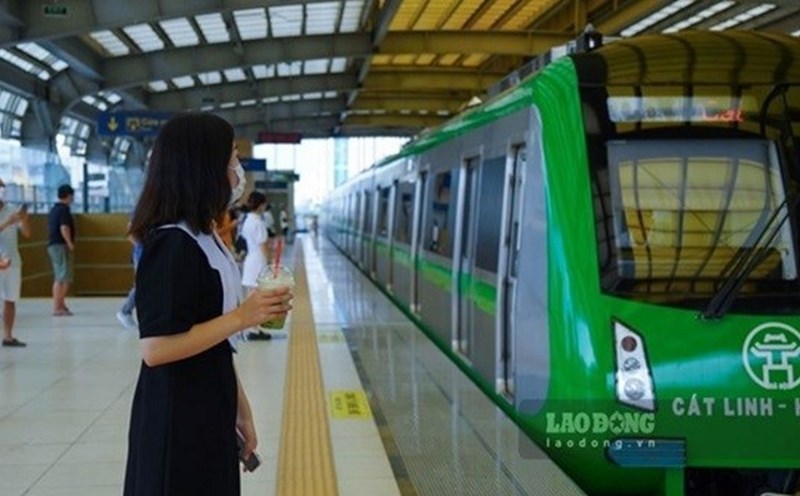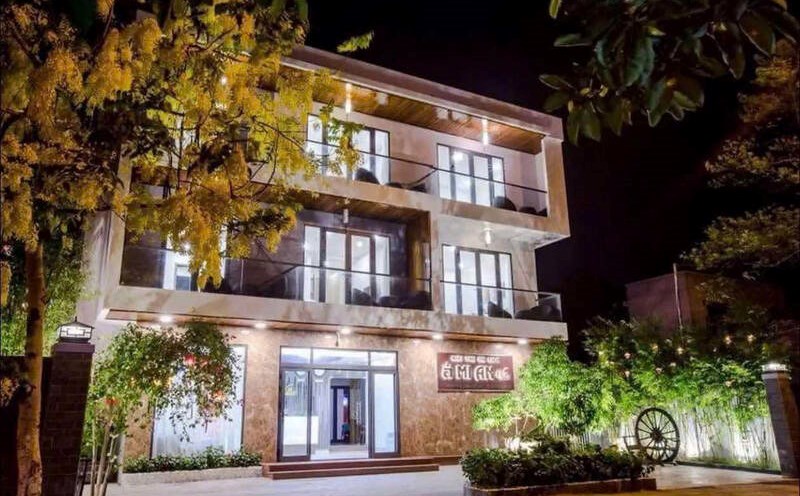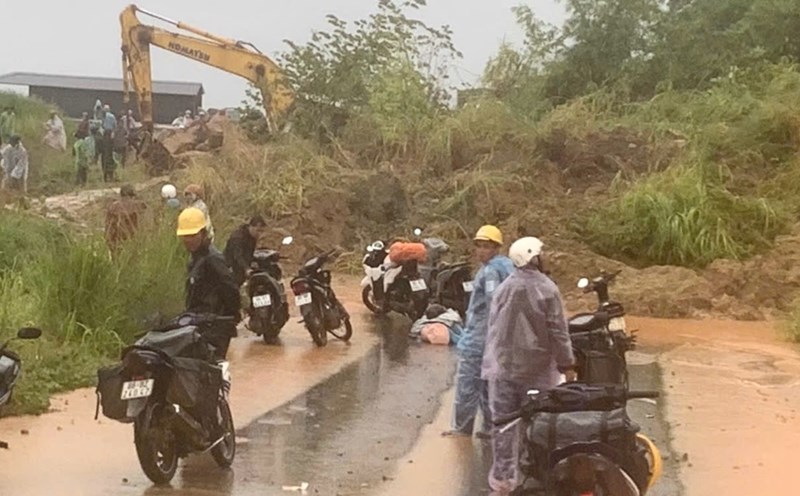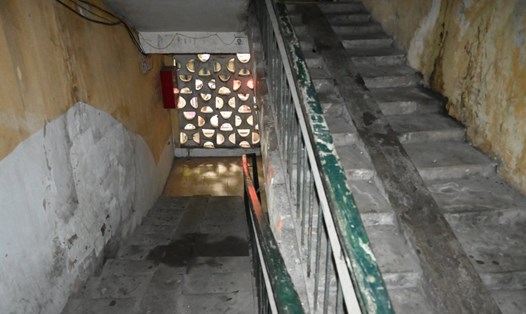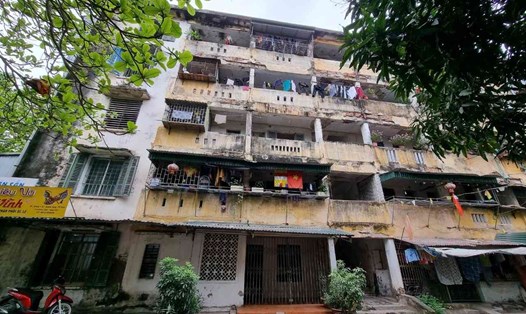Rampant collective housing areas
The 3-storey apartment complex on Phan Boi Chau Street (Nam Dinh Ward, Ninh Binh Province) used to be a bustling residential area, now there are only a few households living there. The house was built in the 1960s to house workers at Nam Dinh Textile Factory. Now the walls are cracked, the roof is leaking, the stairs are peeling, and the toilets are degraded.
According to the reporter of Lao Dong Newspaper, the entire infrastructure of this housing area has seriously degraded, at risk of collapse. Every time there is heavy rain, people have to stretch tarps and place pots to collect water all over their homes.
The cement stairs are cracked and broken at every corner. Every step up and down, people have to stick to the railing, step by step for fear of slipping and falling. The domestic power system is temporarily connected, with tangled ropes stretched all over the ceiling. Many exposed electrical wires are roughly wrapped in protective tape, posing a potential risk of fire and explosion.
"This apartment complex currently has 48 apartments divided into 3 floors, each floor has 16 apartments. Currently, the entire apartment complex is only inhabited by a few households. Every time it rains, the walls and roofs leak, the most frightening thing is the wall falling on the head. We just hope to move to another place to feel secure in our old age" - Ms. Truong Thi Binh (resident on the 2nd floor of the above apartment complex) said.
Similarly, at the apartment complex at 181 and 207 Hoang Van Thu Street, Nam Dinh Ward, it has also been seriously degraded for many years. Every time the storm season comes, this place is on the list of places that must be urgently evacuated due to the risk of collapse, flooding and unsafety. The infrastructure of the housing area has expired, there has been many damages in the load-bearing structure, and is classified as a particularly dangerous individual house.
The 5-storey apartment building over 60 years old, located on Tran Dang Ninh Street, is in the same situation. Ms. Le Thi Hong (53 years old), a resident of the 5-storey market 2 building, said: "Currently, many items in the building have seriously degraded. Although she was very worried, because she had no other place to live, she still had to continue living here".
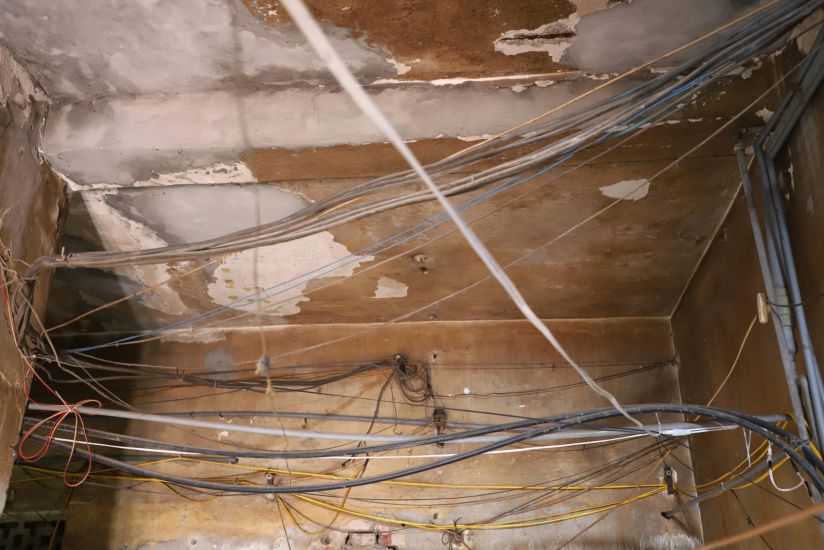
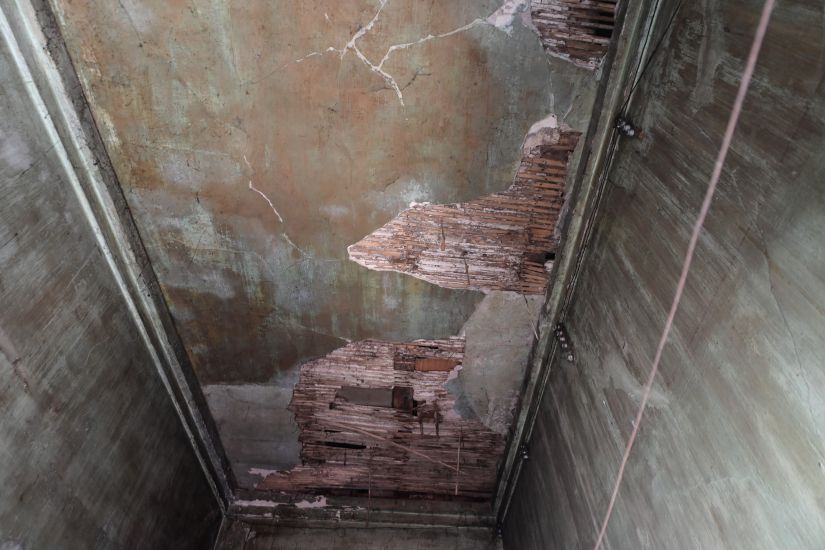
Waiting for the renovation plan
Currently, in Nam Dinh ward, there are 29 old high-rise apartment buildings that have seriously degraded, most of which were built before 1970.
While the local government has not yet had a solution, people still have to " live temporarily in the middle of risks", temporarily evacuate every rainy and stormy season, then return to live in houses that are no longer safe.
Many households have to adapt to the deterioration of the construction conditions. Basement sows are used to collect leachate from the ceiling, nylon sheets, sacks, and tarpaulins are used to shield furniture from mold and water seepage.
The living space is cramped, makeshift, unsafe but is still the only place of residence for many low-income families, the elderly and children. Most of the residents here are unable to move out or rent new houses.
Mr. Tran Anh Dung - Vice Chairman of Ninh Binh Provincial People's Committee - said that the People's Committee of the old Nam Dinh province has repeatedly issued plans to renovate old apartment buildings in the province, prioritizing the demolition of dangerous and severely damaged works to ensure the safety of people's lives and property. However, everything has stopped at the policy level.
"The main reason is the lack of capital, the lack of a clear mechanism for resettlement and especially the lack of specific regulations on inspection and assessment of the safety of state-owned housing" - Mr. Dung said.

